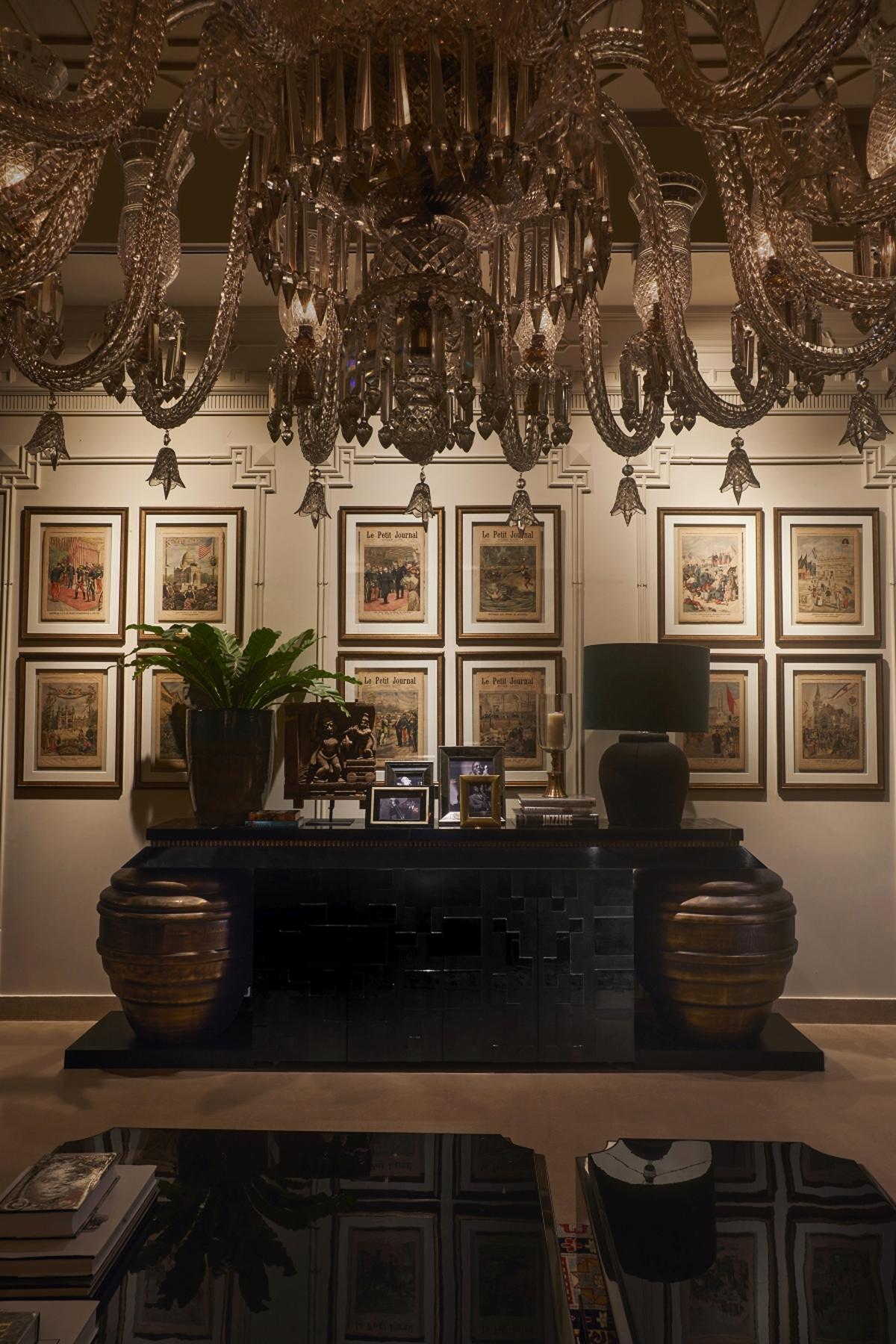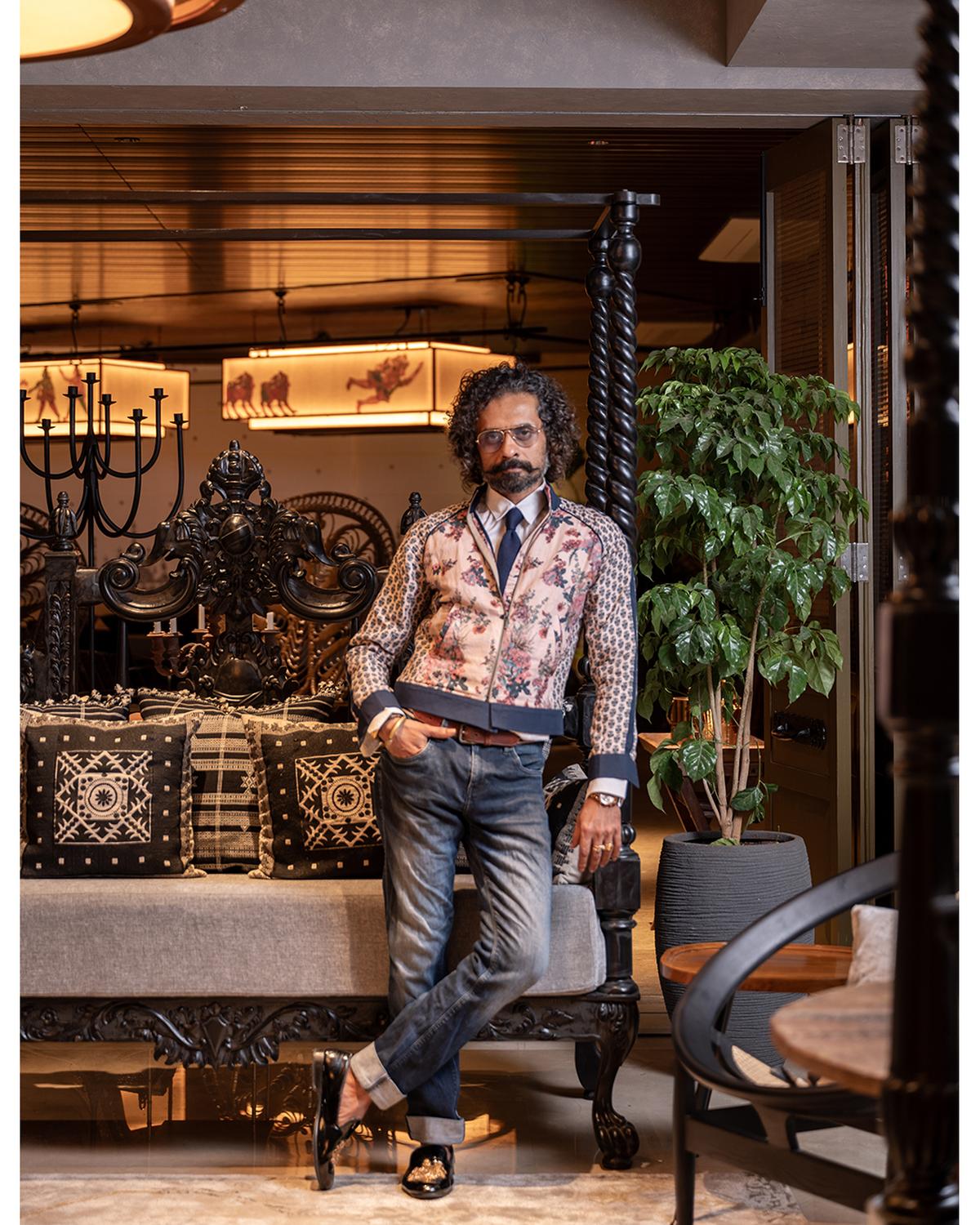[ad_1]
The coming together of fashion and interiors isn’t new. Internationally, Armani, Bulgari and Versace are just three big maisons that have stamped their names on hotels and homes. In India, Sabyasachi’s collaboration with Asian Paints and Delhi-based JJ Valaya’s tile collaboration with FCML have allowed customers to bring a bit of the luxe life to their humble abode. But what about giving the entire home the designer treatment?
Last year, Mumbai-based menswear designer Kunal Rawal announced that he was entering the luxury real estate space. He chose Boheim, as they had projects planned for Goa, Alibaug and Hyderabad.
In Goa, Rawal will be designing the interiors of Finca Sagrada, a project in Colvale that features a stream running through the development, while interior designer Gauri Khan is helming the interiors of Sanctuary, a project in nearby Siolim. Lastly, Abu Jani and Sandeep Khosla are bringing their maximalist approach to villas in Goa, but this time in Moira. There is another project as well, called Gaia, featuring estates in Alibaug. Those who have visited the duo’s new store in Mumbai’s Jio World Plaza will agree that the veteran designers know a thing or two about immersive experiences, rooted in Indian craftsmanship.

JJ Valaya’s interiors include custom-made furniture.
A pandemic pivot
This is not the first time fashion and interiors are coming together, with Bengaluru-based Sounak Sen Barat, designer at House of Three, also working across both design spheres. Barat launched interiors as a new vertical during the pandemic and hasn’t looked back. Today, he makes time for both fashion and real estate projects and says, “We also work B2B in collaboration with niche luxury builders in the luxury second homes market.” Clearly there is a growing demand for all things designer approved in the living space. Samarth Bajaj, director at Boheim, says his company is aiming to do things differently, prioritising the environment, and hoping to champion craftsmanship, while also working with some of the biggest names in fashion design.
The Bajaj family has run Shiv Shakti Constructions since the 1960s, with projects in Mumbai, Chennai, Hyderabad and Bengaluru. About tying up with these fashion designers, Bajaj notes, “So, the idea came from the fact that I’ve seen the spaces that they’ve designed for themselves, in terms of their homes or their retail stores, and I’ve absolutely loved what they’ve done.” He elaborates, “I think that people who are not formally trained in a particular field have the liberty of bringing in a fresh perspective. Sometimes when you’re professionally trained, you’re bound by what you’ve learned.”

Samarth Bajaj and Kunal Rawal
In the past, designers such as Delhi-based Tarun Tahiliani and Valaya have worked on villas for private clients and developers. Valaya notes, “My process involves creation as well as curation,” and so his interiors include custom-made furniture anchoring other elements such as antiques and carpets. He goes on to explain that even though aesthetics is what people see first, any home must be architecturally sound, and to that end, he works with an architecture firm that ensures the technical drawings can be executed as well. Tahiliani has also worked in Goa on villa rentals such as the AIS Glass Villa.
Playing to their strengths
Every designer has their own signature, as Barat points out. “We create an industrial/Brutalism-inspired base and layer it with a combination of colonial, Bengali, Dravidian and Indian heritage elements that have been customised or sourced from across the length and breadth of India,” he explains. With Boheim, both Jani and Rawal admitted to being excited to branch out as they play to their strengths: looking to work with traditional crafts, while creating functional spaces. As Khosla puts it, “It’s a home, so we can’t over-clutter it with too many things.”

Sounak Sen Barat
Even though luxury now often involves automation, Khosla has a lot to say about what we’re losing as we give up on tactility. “Abu and I hate this modernisation to a certain extent because putting your lights on and dimming them and putting them on too sharp… everything is at the click of a button now. Having said that, we are adapting to modernisation today,” he says.
Bajaj, who is behind The Designer’s Class, an online learning platform catering to those interested in design, explains that getting some of Indian fashion’s biggest names on board for these homes was a conscious choice. “Under the brand [Boheim], we have about 10 projects that are ongoing right now. So, logistically it would have been much tougher if only one designer were to execute all projects.”
Obviously no one is complaining. Designers are excited to have different avenues to showcase their vision, with Valaya noting, “I’ve found spaces as interesting as people because there’s a complete blank canvas and you start working on it, whereas when it comes to people, it’s about incorporating a person’s individuality into what you’re creating.”
Boheim plans to deliver three of its 12 projects this year, with the first handover scheduled for June.
Secret chambers
Each of the designers we spoke with seemed to enjoy different aspects of putting together a design. For Valaya, who is a maximalist designer, it’s no surprise that he looks forward to the detailing, “from the right kind of art to the right kind of carpet, the right kind of artefacts”. Barat, on the other hand, revels in creating hidden spaces. He says, “[It] could be the kids’ room or a hidden study, library, your personal speakeasy hidden bar, or a fully loaded walk-in wardrobe through a hidden door that is probably a bookshelf. The trick is to hide it in plain sight, perhaps make a focal point wall fixture into a secret door.” Lastly, Rawal champions functionality, and notes, “Men often gravitate toward spaces that are practical and efficient. Think smart storage, multi-use furniture, and layouts that make sense for everyday use whether that’s lounging, working, or entertaining.” When designing, Rawal keeps in mind that, “A home should reflect how it’s used; every corner should hold intention, every space should serve a purpose.”
Published – May 30, 2025 05:49 pm IST
[ad_2]
Source link


